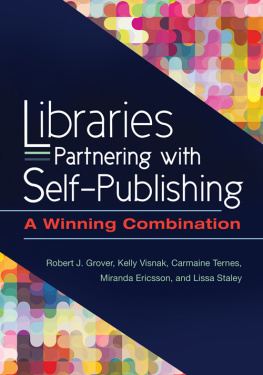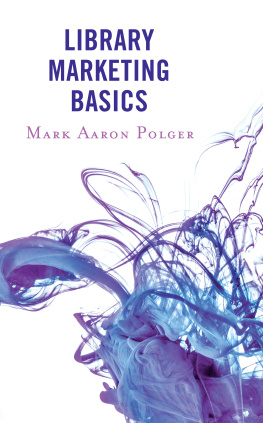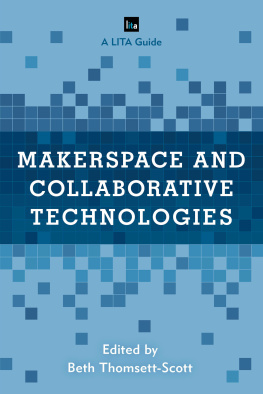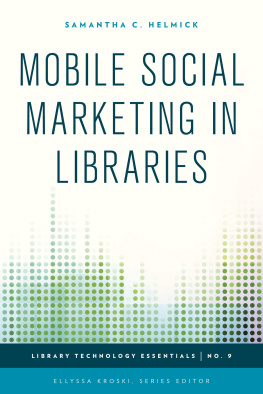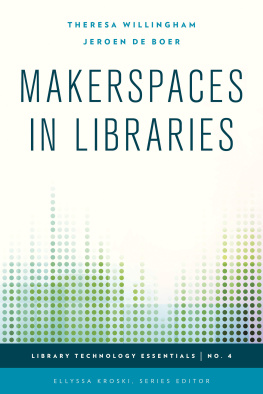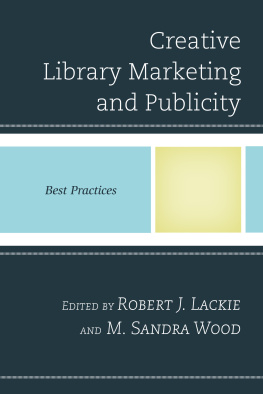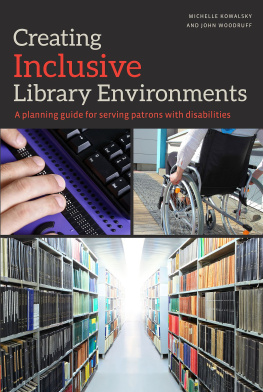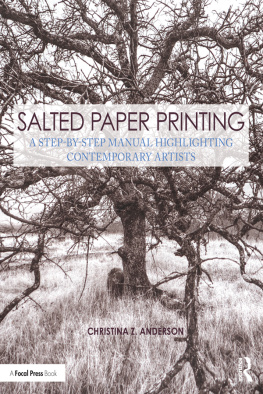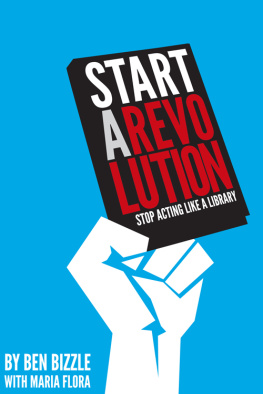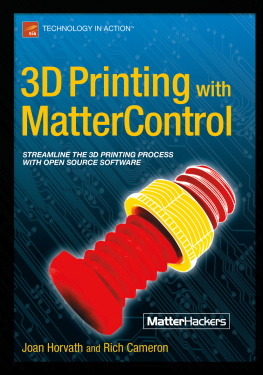LIBRARIES PARTNERING
WITH SELF-PUBLISHING
LIBRARIES PARTNERING
WITH SELF-PUBLISHING
A Winning Combination
Robert J. Grover, Kelly Visnak, Carmaine Ternes,
Miranda Ericsson, and Lissa Staley

Copyright 2016 by Robert J. Grover, Kelly Visnak, Carmaine Ternes, Miranda Ericsson, and Lissa Staley
All rights reserved. No part of this publication may be reproduced, stored in a retrieval system, or transmitted, in any form or by any means, electronic, mechanical, photocopying, recording, or otherwise, except for the inclusion of brief quotations in a review, without prior permission in writing from the publisher.
Library of Congress Cataloging-in-Publication Data
Names: Grover, Robert, 1942- author. | Visnak, Kelly, author. | Ternes, Carmaine, author. | Ericsson, Miranda, author. | Staley, Lissa, author.
Title: Libraries partnering with self-publishing : a winning combination / Robert J. Grover, Kelly Visnak, Carmaine Ternes, Miranda Ericsson and Lissa Staley.
Description: Santa Barbara, CA : Libraries Unlimited, [2016] | Includes bibliographical references and index.
Identifiers: LCCN 2016013187 (print) | LCCN 2016032582 (ebook) | ISBN 9781440841583 (paperback) | ISBN 9781440841590 (eBook)
Subjects: LCSH: Libraries and publishingUnited States. | Self-publishingUnited States. | Electronic publishingUnited States. | Libraries and communityUnited States. | LibrariesCultural programsKansasCase studies.
Classification: LCC Z716.6 .G76 2016 (print) | LCC Z716.6 (ebook) | DDC 070.5/94--dc23
LC record available at https://lccn.loc.gov/2016013187
ISBN: 978-1-4408-4158-3
EISBN: 978-1-4408-4159-0
20 19 18 17 16 1 2 3 4 5
This book is also available as an eBook.
Libraries Unlimited
An Imprint of ABC-CLIO, LLC
ABC-CLIO, LLC
130 Cremona Drive, P.O. Box 1911
Santa Barbara, California 93116-1911
www.abc-clio.com
This book is printed on acid-free paper 
Manufactured in the United States of America
CONTENTS
ACKNOWLEDGMENTS
We are grateful to our many professional colleagueslibrarians and writerswho have contributed to this book. We thank our Emporia authors who willingly shared their self-publishing experiencesTracy Million Simmons, Scott Irwin, and Glen Strickland.
We appreciate the Topeka writing community for expecting more from their library and inspiring the projects and programs we have created together. We thank the authors interviewed here who gave us the words to educate and motivate other self-published writers.
We thank our family members for their support as we spent many hours away from them writing, rewriting, editing, and meeting with our co-authors.
And we thank our acquisitions editor, Blanche Woolls, who encouraged us to write this book and provided guidance along the way.
INTRODUCTION
CHAPTER OVERVIEW
Our world is rapidly changing, and publishing also is experiencing cataclysmic change, providing the opportunity for librarians and writers to engage in a creative and productive partnership. This book is devoted to the evolution of traditional publishing and library service, and the challenges associated with writing and publishing in a digital age. Technology advances have spawned the Open Access movement and have prompted a revolution in publishing and the role of libraries in their support of writers as they conduct research, write, edit, design, and publish their work.
Our world has changed substantially with the invention and widespread use of the computer and Internet. This chapter examines the publishing process within the life of information and how it has changed. In addition to introducing the purpose and intended audience, we also outline the contents of the book.
PUBLISHING IS CHANGING
The twenty-first century is fast-paced and characterized by rapid and continuous change. Nearly every aspect of our lives has changed in the last three decadesour values, family structure, education system, communication patternsin general, the way we live. We live in a much different world than our parents. Some adults find this society challenging and confusing, and they long for a simpler life.
Change is a constant in our world of the twenty-first century, and technological advances fuel that change. Recent advancements in technology have provided new methods for publishingthe way we record and disseminate information. For example, Snapchat combines visual and textual information as well as highlights and layers information for easier comprehension by focusing simultaneously on the sender and receiver of the message. Unlike a book, which appears flat and is designed so that the reader progresses in a linear fashion, Snapchat and other new social media illustrate nonlinearity and the dynamic interaction of information in various formats, enhanced by bright colors and freestyle design.
Technology enables us to break through the barriers of distance and time to work together solving problems and to learn, as we never have before. The Internet enables instant transmission of information in a variety of formats to numerous sites and people. Electronic books, blogs, Facebook, Twitter, and other social media are forms of communication that result from the technology revolution.
We submit that the driving force for this change in our world is technology, and in this book we explore one important aspect of this changethe publishing process. Indeed, communication and information technologies have changed dramatically the way we create new information and knowledge, how we record it, mass produce it, communicate it, learn from it, use it, and store it.
At the heart of current society in the United States and worldwide is information and knowledge. We can say with assurance that we live in a knowledge society; knowledge is essential to our economic system, government, educational system, and even our entertainment. Information is to our society what blood is to our bodies; as our vascular system carries blood to all parts of our bodies, so information and knowledge support virtually all elements of our society.
WHY THIS BOOK IS NEEDED
Technology has changed our lives and the way we communicate; consequently, librarians and other information professionals must take advantage of newer technologies and help their clientele do the same. This book defines publishing as the creation, recording, and dissemination of information. In the past, patrons came to the library asking how to get their childrens book or their great American novel published. The recording and dissemination processes have been changed by technology and have expanded the capabilities of library and information professionals to help their clientele self-publish books. Needed is a go to source for librarians to consult and provide for clientele wanting to publish their books; this book fulfills that need.
PURPOSE OF THIS BOOK
This book provides advice and suggested resources for librarians assisting the large number of clientele who wish to self-publish in various formats. This book serves as a guide to help librarians and their clientele in all types of libraries to understand and participate in the book publishing process, using new technologies and media. It is both a handbook and a guide to other resources to assist the librarian and author in a self-publishing partnership.
AUDIENCE
This book is intended for library and information professionals in schools, public libraries, college and university libraries, and special libraries (government, medical, law, historical, corporate, and government) who may have a general knowledge of technology applications to electronic publishing hardware and software. The book is a guide for both librarians and authors who want to know how to write, design, publish, and market their own books. In other words, this book helps authors and librarians to partner in the book-publishing process.
Next page
